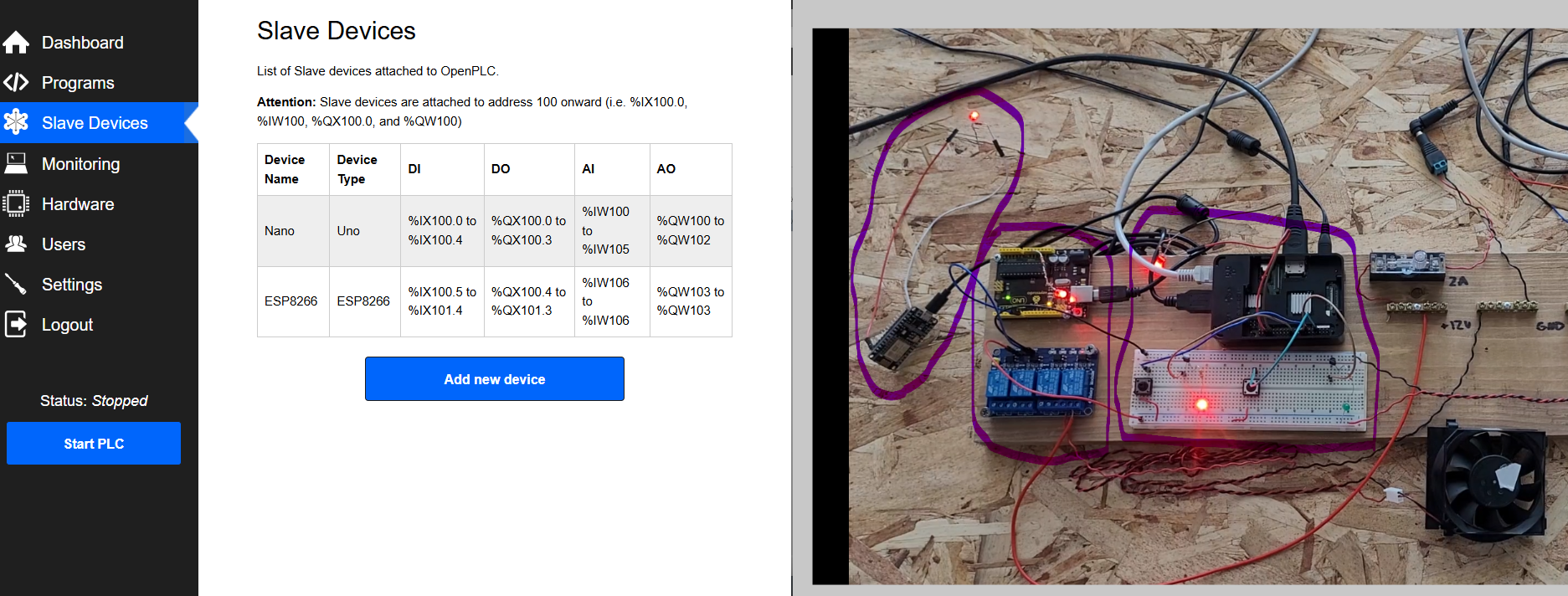Automation
Let's see what I've experienced with automation (Industrial; Operational Technology; PLC;
SCADA). [Click on the titles to see each article.]
{To see all my project experiences, go to the 'Archived' page.}
(NOTE: These articles are personal records of what projects I have attempted. These are not
articles to take directions from; instead, I have left references to those articles at the
end.)
Why I Did This
In my pursuit of industrial automation knowledge, I wanted to see what open source SCADA
software was suitable for learning, practicing, and using with my previous automation setups
(PLCs). SCADA is 'Supervisory Control And Data Acquisition', and it's software that
acts to oversee multiple PLCs, DCSs, RTUs, by: giving visual representations of the plants
(Human Machine
Interface, HMI) that can also be used to send control commands, collect alarms, capture
all tag data into databases (like SQLite) and retrieve that data into a time-series chart
(historian), and creating scripts for producing new conditions and actions from combined PLC
conditions (like PLC1 can affect PLC2, or, PLC1 and PLC2 at specific conditions can together
cause a new state); this all together increases the overall power a user can have with
multiple automation systems, therefore, it is a valuable tool to learn.

Why I Did This
While scouting online for cheap physical PLC options, I found the Canaduino PLC 100 on
Amazon.
It's a small board (about $30) that I had to solder myself and can
attach to an Arduino Nano. It contains ruggedized inputs and outputs at higher
voltages than what the Nano natively supplies, like
6 relay digital outputs with optoisolators; 4 digital inputs that can handle 3.3 - 24V; 4
analog inputs and 4 analog outputs that can both track in ranges between 0 - 10 V (very
similar to what many professional PLCs can do);
onboard LEDs for digital state notification; and 5V and 10V supply lines.
More importantly, it can be programmed with free Arduino IDE or the free OpenPLC editor and
runtime.
In this video, I showcase the board demonstrating its power with a makeshift 'water heater
and humidifer plant'.
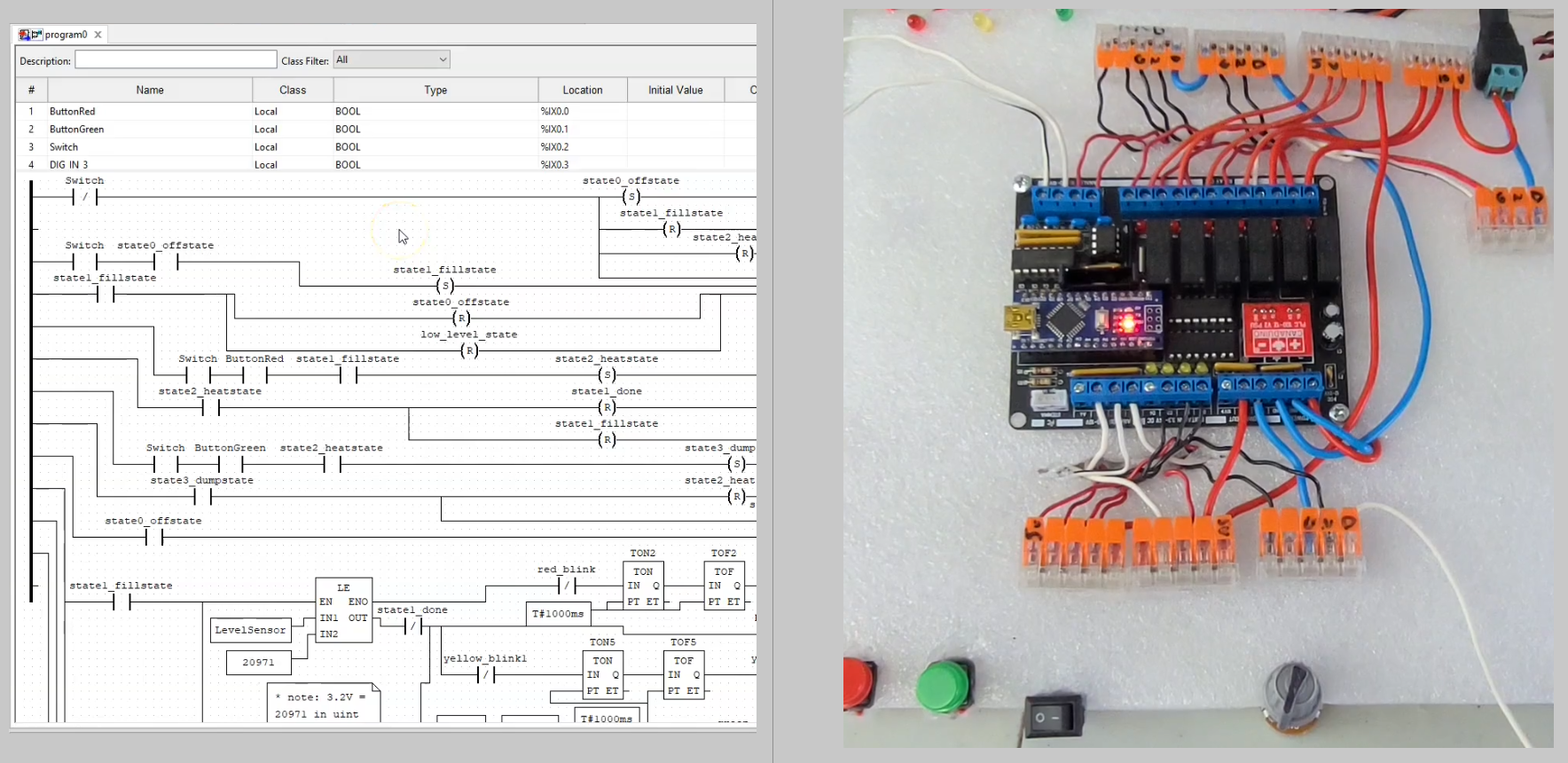
Why I Did This
In previous articles, I've mentioned training and experiencing PLC development using OpenPLC
and FactoryIO.
In this demo, I using SFC to program FactoryIO's warehouse scene.
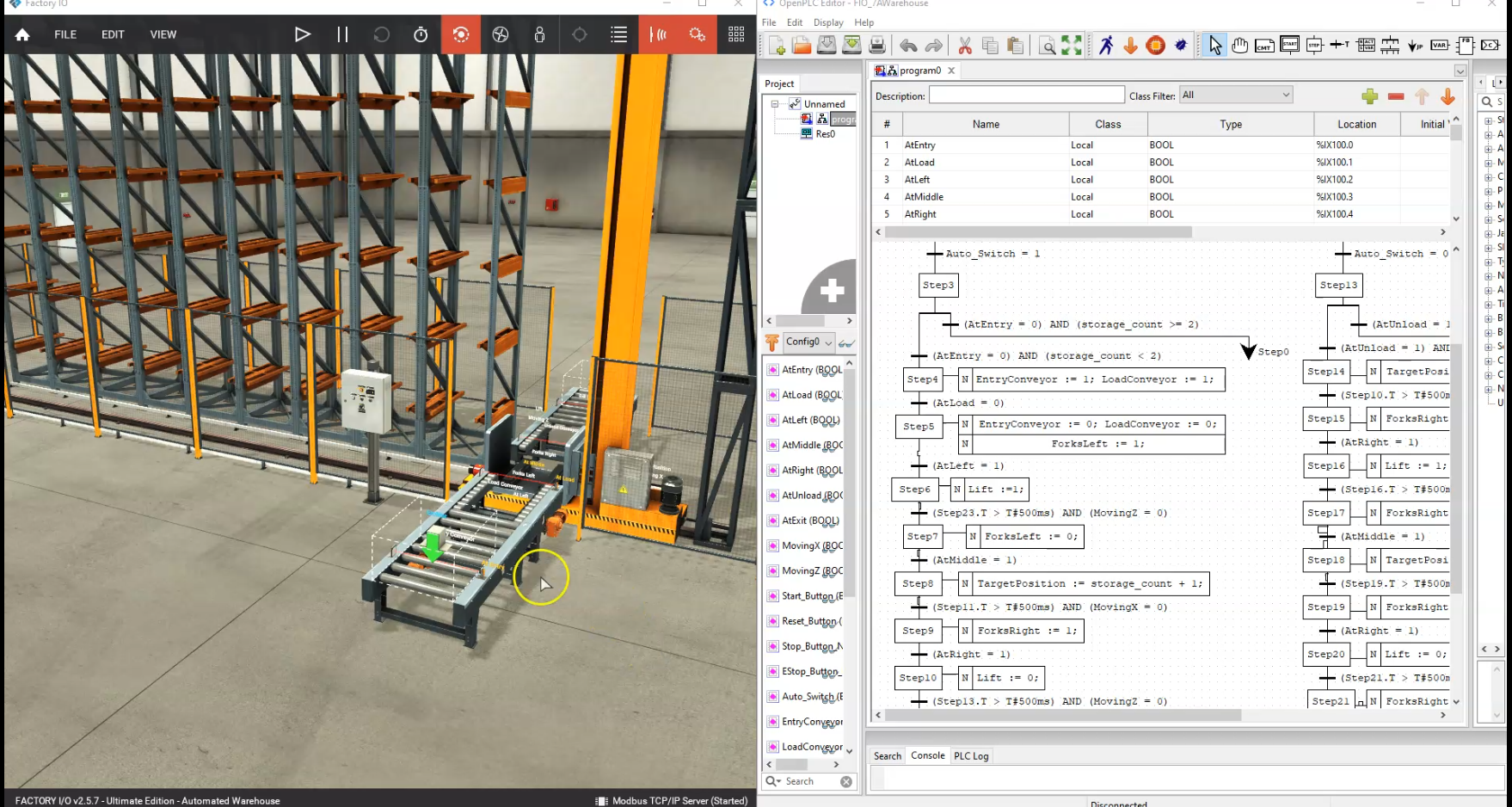
Why I Did This
In previous articles, I've mentioned training and experiencing PLC development using OpenPLC
and FactoryIO.
In this demo, I using SFC to program FactoryIO's pick and place scene.
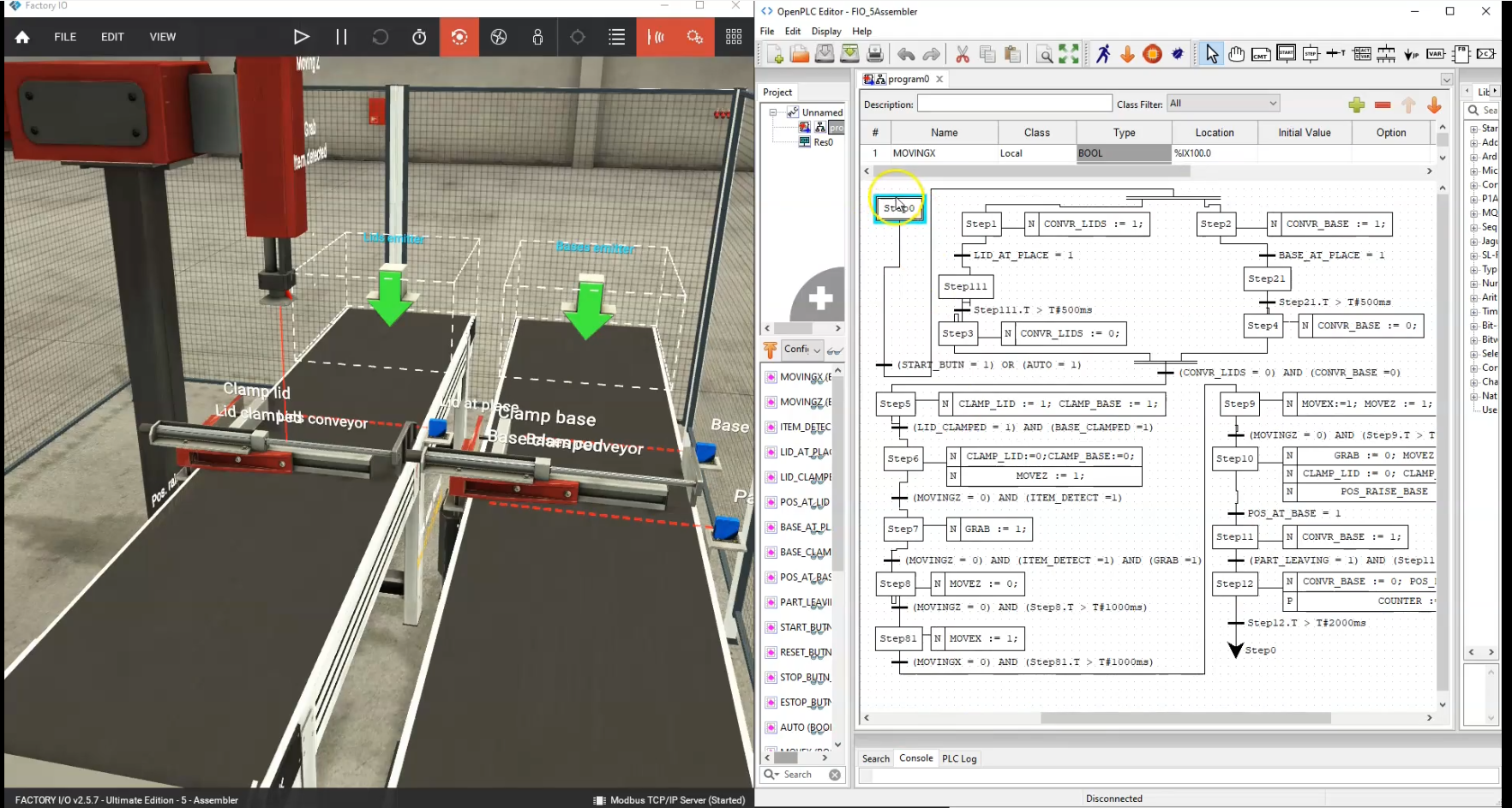
Why I Did This
In previous articles, I've mentioned training and experiencing PLC development using OpenPLC
and FactoryIO.
In this demo, I using FBD to program FactoryIO's filling tank scene.
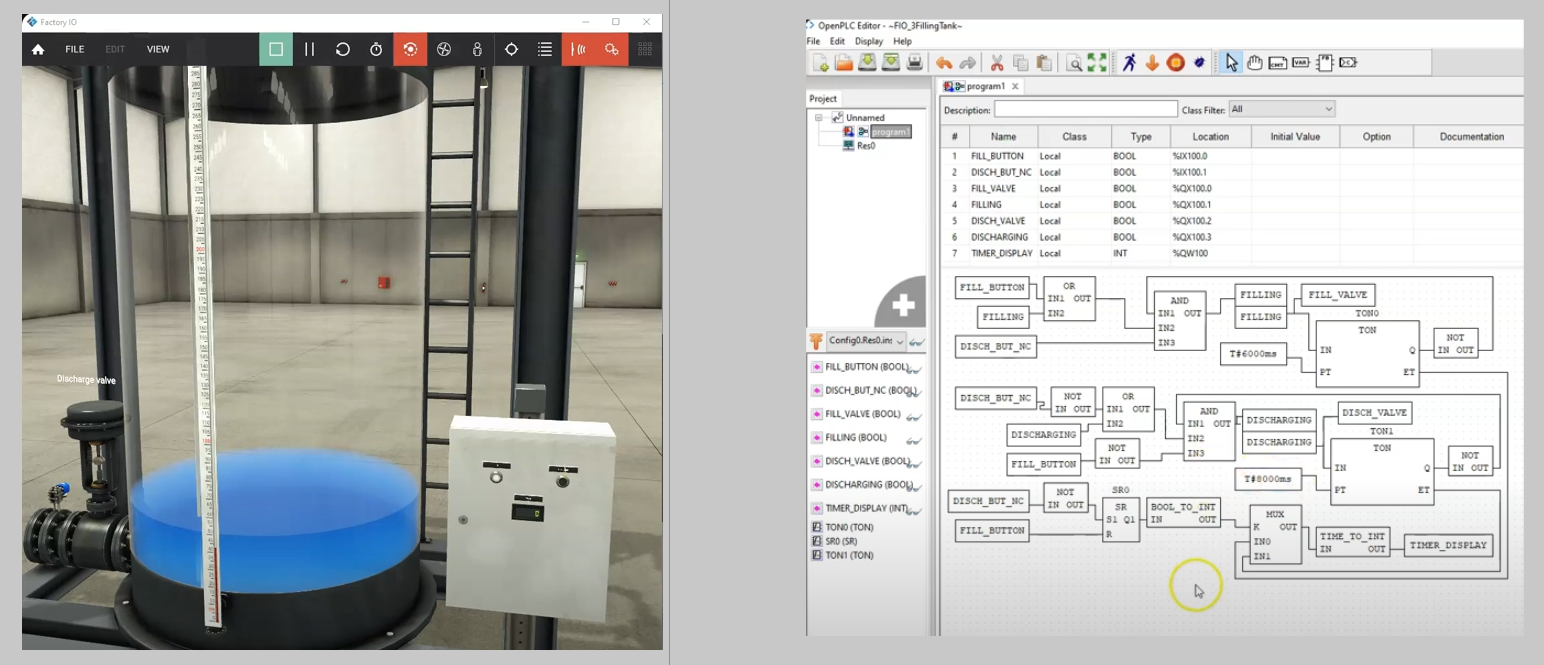
Why I Did This
I'm trying to develop my PLC automation skills as a possible career path, and I'm currently
a
student with a student budget.
PLC programming software can be expensive, and I wanted to find a way to expand my learning
of PLC programming (and utilize test projects) without breaking the bank.
OpenPLC is an open-source PLC programming software that can run on a Raspberry Pi, Arduino,
or just your own PC, and FactoryIO is a virtual plant software that can simulate a plant
environment (which you can get a free trial for 30 days).
Together, they can be used to learn PLC programming and simulate a plant environment for
free (for 30 days, then about $20/month for FactoryIO).
This is my demo of how to get these to work together using the Modus communication protocol
as a link.
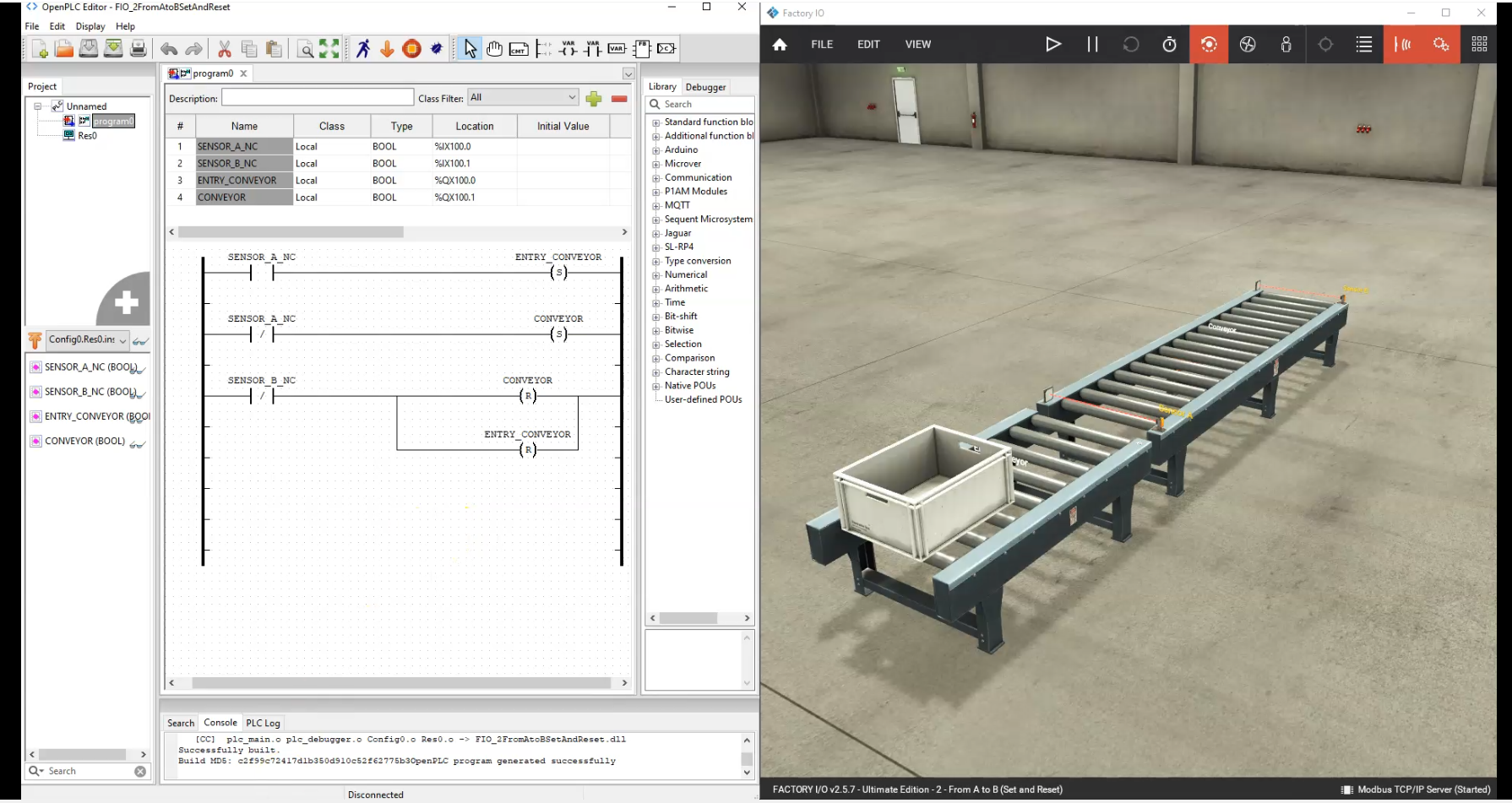
TAGS: electronics; automation; industrial; PLC; Allen Bradley MicroLogix, CompactLogix,
ControlLogix; Ladder; Function Block; Sequential Function Diagram; Structured Text
Why I Did This
One of the possible careers paths I wanted to branch into was Automation. I had previous
history with industrial operations,
so using industrial automation controls (dubbed Operational Technology) and using PLC
(programmable logic controllers) systems;
but less familiar with the programming side of it (I only 'heard' of Ladder logic and
function block programming).
NAIT offered courses in PLC programming, and I wanted to learn more about it. I took the PLC
Ladder Logic Programming and PLC Advanced Programming courses
where I learned to program in the different IEC 61131-3 languages (Ladder Logic, Function
Block Diagram, Structured Text, Sequential Function Chart,
but not Instruction List as lots of companies consider it too archaic). I also learned to
program Allen Bradley MicroLogix 1100 controllers using RSLogix 500 software; and then
CompactLogix 1769-L24ER controllers and 1756-L71 ControlLogix Logix5571
controllers using Studio 5000 Logix Designer.
We also did some short programming/training on a microsystems SCADAPack32 remote terminal
unit (RTU) when we were
learning of
different communications protocol/methods, but these were slower systems so the training was
minimally covered.
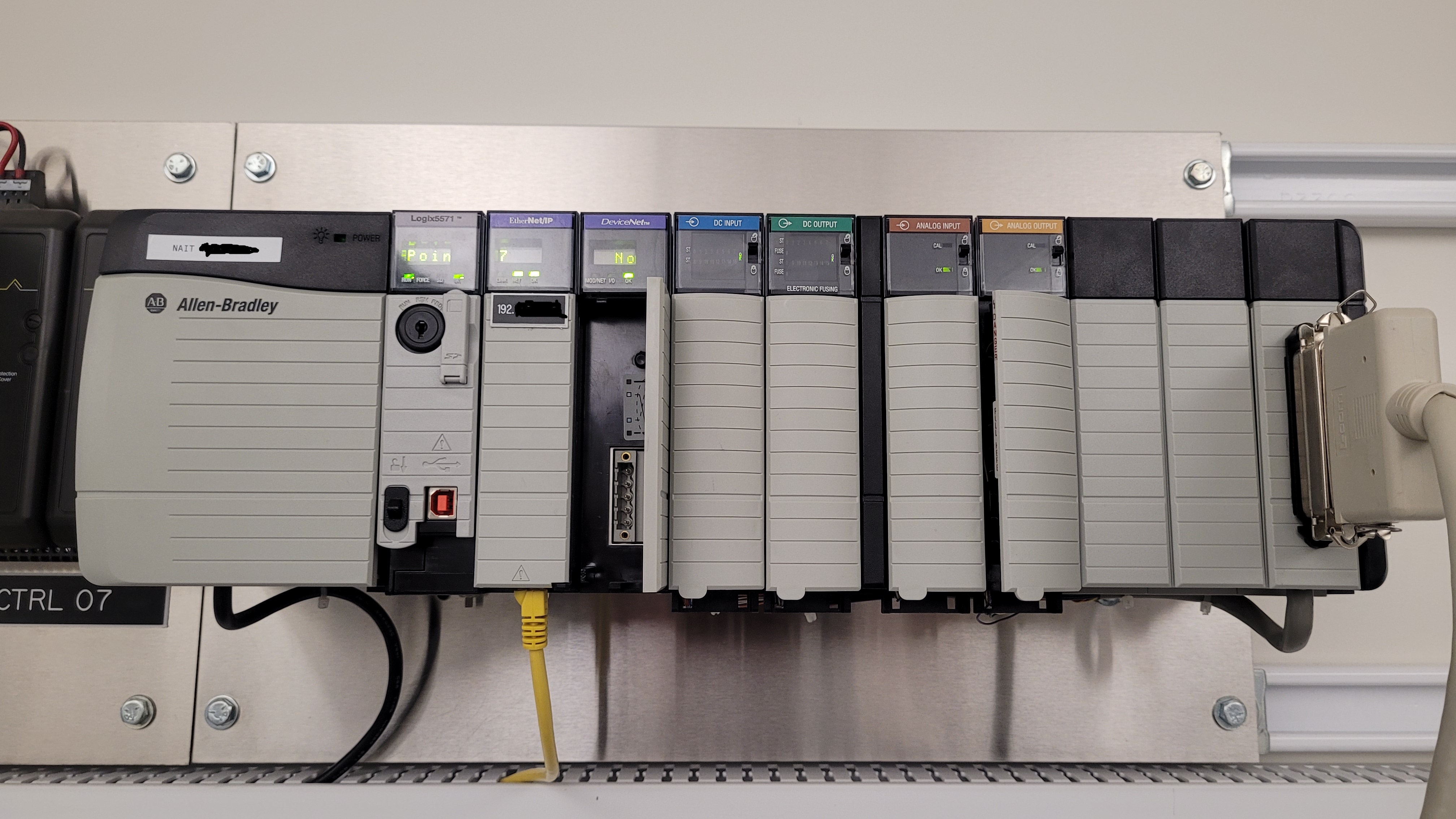
Why I Did This
In my pursuit to experience industrial automation and PLC programming, I wanted to test the
OpenPLC runtime on my Raspberry Pi.
I wanted to see how effective this runtime was and
how effective the ability to connect to slave devices was. OpenPLC allows users to install
the runtime (the PLC cycle) on a Raspberry Pi, but also can program Arduinos and ESP
microcontrollers to act as I/O extensions (giving the ability to connect more sensors
actuators, but also wireless connectivity), all apparently with the help of Modbus
communication.
